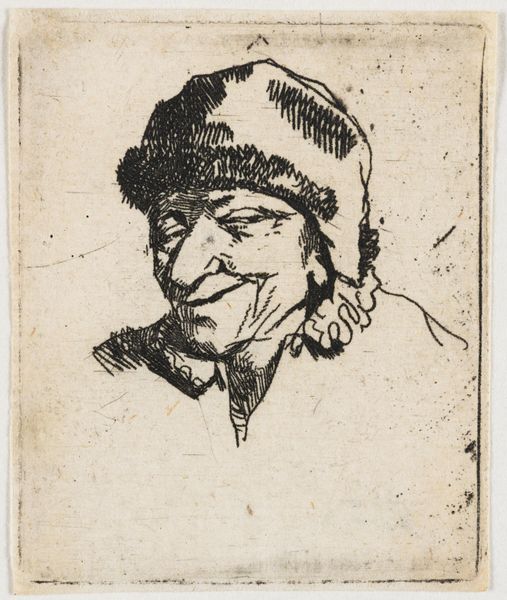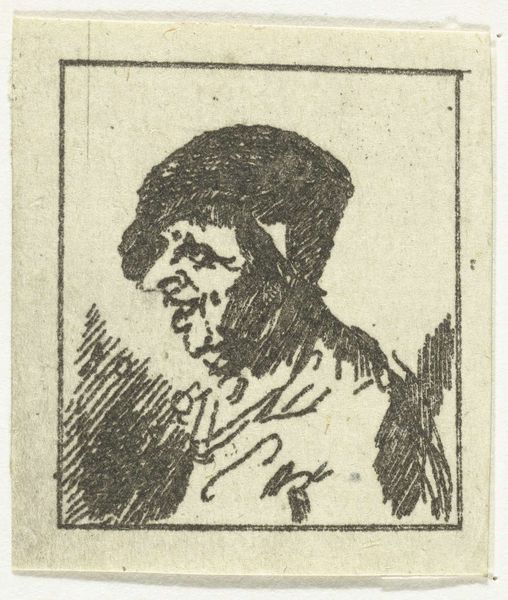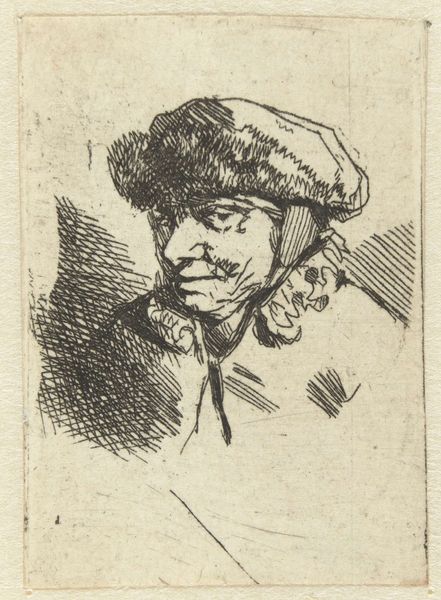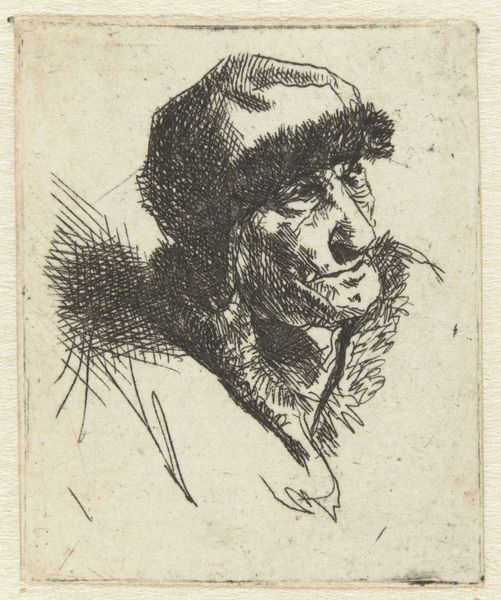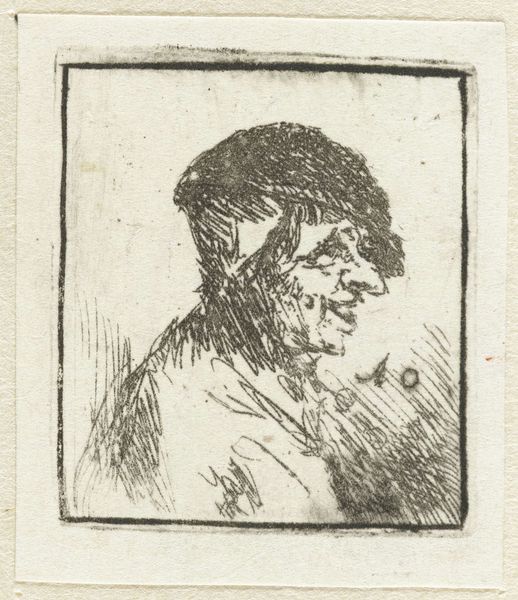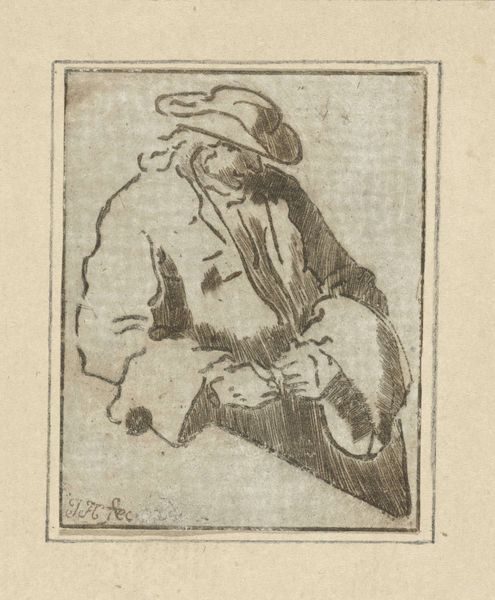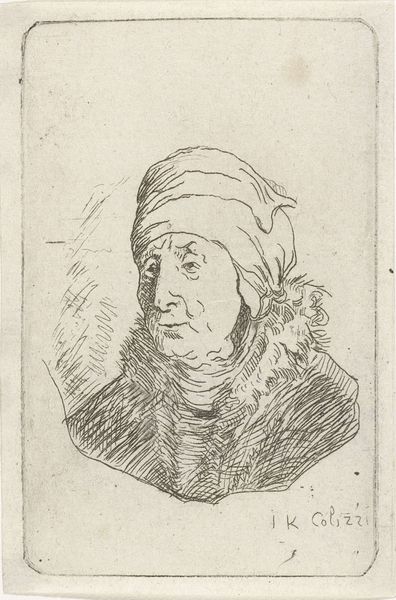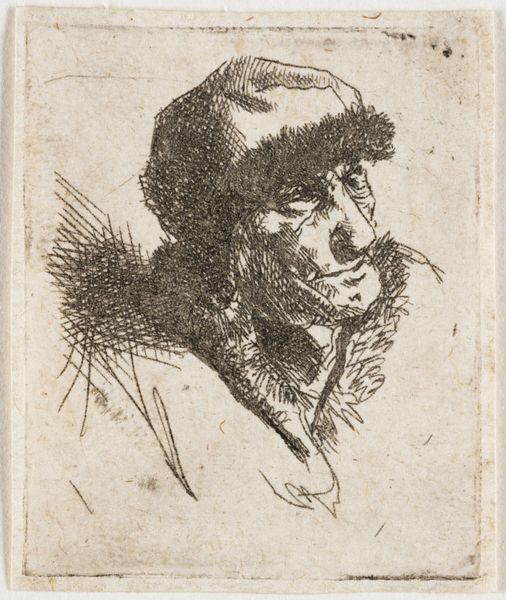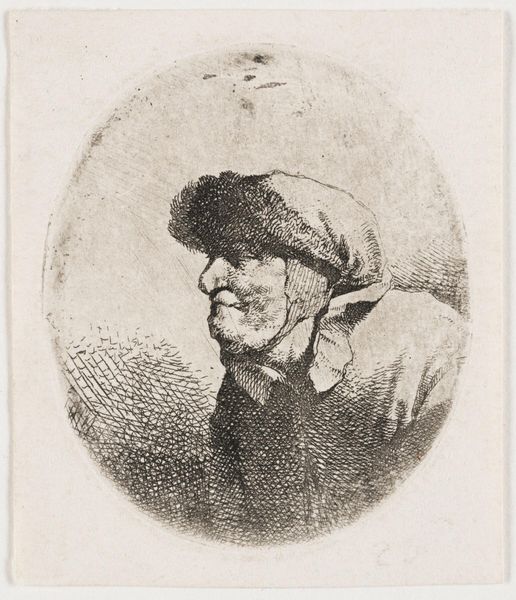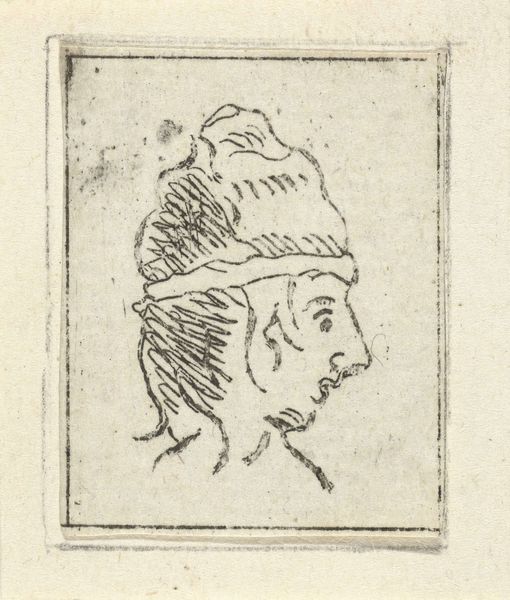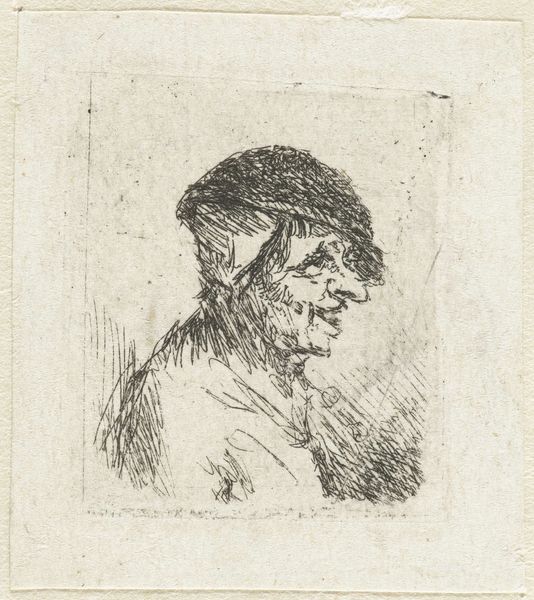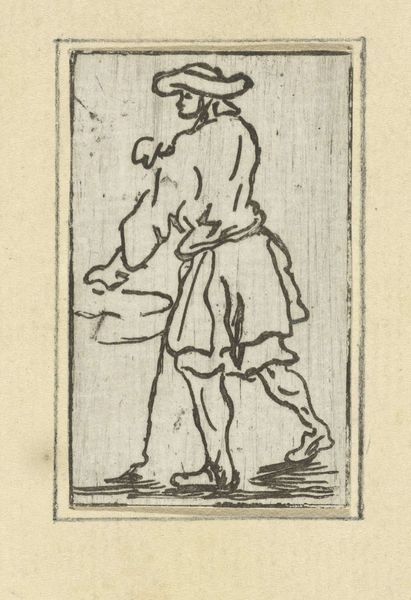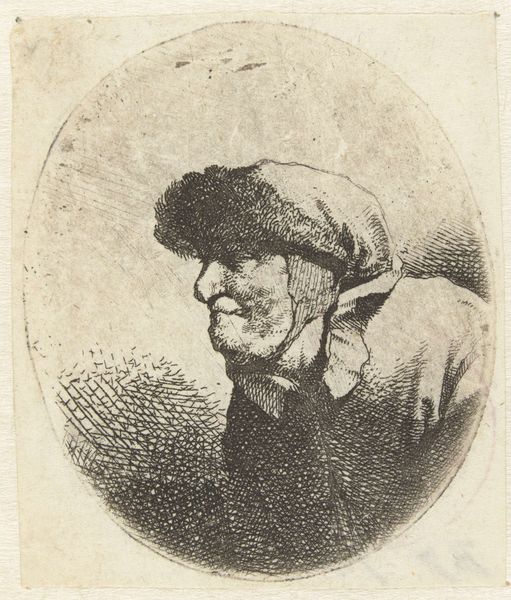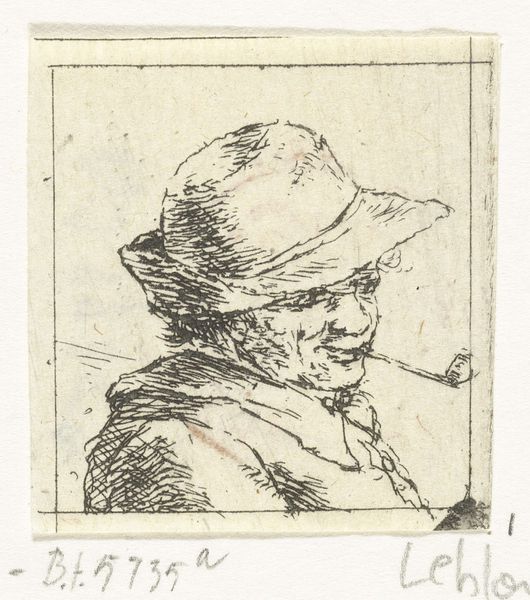
drawing, ink, pen
#
portrait
#
drawing
#
toned paper
#
light pencil work
#
ink drawing
#
dutch-golden-age
#
pen sketch
#
pencil sketch
#
figuration
#
personal sketchbook
#
ink
#
ink drawing experimentation
#
pen-ink sketch
#
line
#
sketchbook drawing
#
pen
#
genre-painting
#
sketchbook art
#
realism
Dimensions: height 48 mm, width 41 mm
Copyright: Rijks Museum: Open Domain
Editor: So, this is Cornelis Bega's "Lachende man," from the mid-17th century. It's an ink drawing. The subject’s expression immediately strikes me; there’s a certain warmth there. What can you tell me about this portrait within its historical context? Curator: Well, genre scenes and character studies became quite popular in the Dutch Golden Age. This piece really fits into that tradition of realism. It is the depiction of ordinary people, often in informal settings, elevated the everyday. How might the burgeoning merchant class, gaining social power, have influenced this artistic trend? Editor: That makes sense. The rising middle class, eager to see their own lives reflected in art. The Rijksmuseum categorizes this as both portrait and genre painting...why? Curator: Because it's walking the line, isn't it? While it’s clearly a portrait of an individual, the broad, expressive strokes of ink suggest a focus less on capturing likeness, and more on conveying a particular *type* of person. These genre paintings explored human nature and social types. Is he truly laughing, or merely grinning knowingly? Is the viewer laughing with him, or *at* him? The questions it begs show art's role in shaping social understanding. Editor: Ah, I see! It's about broader commentary rather than just the individual. It certainly adds another layer of interpretation. I’ll have to remember this context. Curator: Exactly! Keep looking at how artists engage in the socio-political forces around them.
Comments
No comments
Be the first to comment and join the conversation on the ultimate creative platform.
